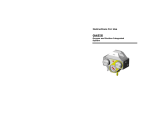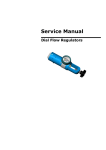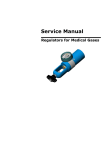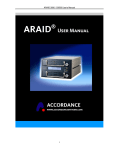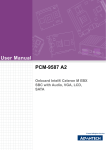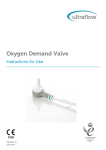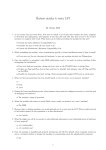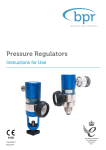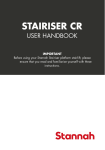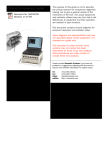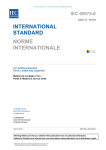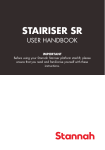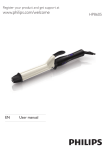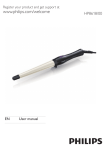Download Dial flowmeter - BOC e
Transcript
Micro Flowmeter Pt# 816-xxxx Service Manual (all models) Micro Flowmeter © Copyright No part of this manual may be copied for any reason without the written permission of BPR Medical Ltd. Manufactured By: BPR Medical Ltd 22 Hamilton Way Mansfield NG18 5BU United Kingdom Tel: #44 (0)1623 628281 Fax: #44 (0)1623 628289 Table of Contents 1.0 DESCRIPTION OF SYMBOLS ................................................................... 4 2.0 PRODUCT DESCRIPTION ....................................................................... 4 3.0 APPROVALS ......................................................................................... 4 4.0 IN-HOUSE SERVICING .......................................................................... 4 5.0 GENERAL SAFETY WARNINGS ................................................................ 5 6.0 INSPECTION AND MAINTENANCE PERIODS.............................................. 6 7.0 SPECIFICATION ................................................................................... 6 8.0 CLEANING ........................................................................................... 7 9.0 PROCEDURES FOR PERIODIC INSPECTION .............................................. 7 10.0 PROCEDURES FOR CHECKING FLOW ACCURACY ...................................... 7 10.1 Flow Rate Test 7 10.2 Flowmeter Leak Through 7 11.0 PROCEDURES FOR SERVICING & REPAIR ................................................ 8 11.1 Flowmeter Disassembly 8 11.2 Probe Regulator 9 11.3 Servicing 10 11.4 Labelling 10 11.5 DISS Humidifier Fitting 10 12.0 SERVICE KITS .................................................................................... 12 12.1 Service Parts & Kits Micro Flowmeter Service Manual 702-0044 v 3 12 Page 3 of 12 Micro Flowmeter 1.0 Description of Symbols Attention, see Instructions for Use Use no oil Ascending diagonal line on the decal label indicates increase in flow 2.0 Product Description Micro flow describes oxygen therapy at flow rates below 100 cc/min. Primarily flows this low are used in the weaning of neonates from their oxygen dependency. The Micro Flowmeter provides 11 distinct flow rates, which enables the therapy to be moved from one step to the next always knowing that the flow at each step is the same as the previous time the rate was selected. This enables some level of control and in most cases it is the case that the absolute level is not important but the ability to step up or down in distinct stages to suit the infants needs. This is not possible with a variable ball-in-glaa type flowmeter. Cutting edge techniques are used to manufacture the flow metering plates, which require orifice sizes measured in microns. To prevent blockage of such small holes the device has two layers of filtration, a 40 micron filter at the input probe and a 5 micron immediately in front of the metering plate. Change in output flow as a result of changes to the input pressure (either static or transient changes in line pressure) a pre-regulator is built into the device, which provides a stable internal supply pressure irrespective of the line pressure to which the device is connected. This ensures that wherever, or whenever, the device is fitted the flow rate at any setting is always the same. Finally, the device is of all-metal construction and will not break if dropped or knocked. This ensures that it will continue providing the therapy required by the patient. 3.0 Approvals Micro Flowmeter is a CE Marked device in accordance with the Medical Device Directive (93/42/EEC) and meets the requirements of the following Harmonised Standards: EN738-1............ Pressure Regulators and Pressure Regulators with Flowmetering Devices 4.0 In-House Servicing It is strongly recommended that Micro flowmeters with a Service Due Date of Jan 04 or earlier should be returned to BPR Medical for a chargeable, standard service prior to any attempts to service the device inhouse. Several important upgrades have been implemented on devices manufactured or serviced after December 2002 that would not be included on devices built prior to this time. Upgrades are included in a standard service at no extra charge. Micro Flowmeter Service Manual 702-0044 v 3 Page 4 of 12 Micro Flowmeter 5.0 W1 W2 General Safety Warnings Before using or servicing this equipment read through the entire instruction manual. Attempting to use this equipment without an appreciation of its correct operation, its limitations and the general safety warnings associated with compressed oxygen may result in patient or user injury. Oxygen therapy may be a critical treatment. A micro flowmeter should be used in strict accordance with the prescription and instructions of a qualified clinician. The effectiveness of supplemental oxygen therapy can only be determined by continuous monitoring of blood oxygen levels. It is essential that PaO2 or SpO2 monitoring is carried out when supplemental oxygen is prescribed. W3 When the micro flowmeter is turned off isolate the patient from the equipment by disconnecting the delivery tube from either the patient or the micro flowmeter. W4 Only appropriately trained service personnel working in controlled conditions must perform disassembly, assembly and testing of this equipment. W5 Do not submerge in water or allow any fluid to enter the equipment. If you have reason to suspect that fluid or other ingress has occurred remove the device from use and contact the manufacturer. W6 The performance of the device may be affected if it is stored or transported in temperatures outside of the range -20oC to +60oC. W7 Check the cylinder contents before use and at regular intervals during use, as low cylinder pressure may result in poor or non-performance of the equipment. Always change the oxygen cylinder when the oxygen cylinder contents gauge is showing red. W8 The accuracy of the micro flowmeter may be effected if the input pressure is other than that stated in the specifications. W9 Oxygen is not flammable, but the presence of oxygen will drastically increase the rate and severity of combustion. Hydrocarbons such as oil or grease become highly combustible in the presence of oxygen. Oxygen must never be allowed to contact oil, grease or other petroleum-based substances. W12 Never use oxygen as a pressure medium to purge obstructed pipelines or equipment, to operate pneumatic tools, or to build up any pressure in tanks. W13 Never permit compressed medical gases to enter a regulator suddenly. Always open the cylinder valve slowly. Do not stand in front of a regulator outlet when opening the cylinder valve. W14 Do not use or store oxygen equipment near excessive heat (>50oC or 125oF) or an open flame. W15 Use only lubricants recommended by the manufacturer when servicing the Micro Flowmeter. The use of lubricants other than those recommended by the manufacturer may result in fire or explosion. W10 Never administer oxygen while smoking or when near an open flame. W11 Oxygen cylinders have fill 000 kPA (200 Bar). Never from a cylinder without pressure to a safe level pressure regulator. Micro Flowmeter Service Manual 702-0044 v 3 pressures up to 20 use medical oxygen first reducing the through a suitable Page 5 of 12 Micro Flowmeter 6.0 Inspection and Maintenance Periods Periodic Inspection (Every 6 Months) Can be performed within the Ward environment. Includes visual inspection of device and basic check on flow rates at each setting. Requires appropriate test equipment. Requires no replacement parts. Full Service (Every 2 Years) Strip down Service and functional check. suitable workshop conditions. 7.0 Requires appropriate test equipment, replacement parts and Specification General Operating, Storage and Transport Temperature Range -20oC to 60oC Warranty 1 Year Performance Nominal Flow Rate Range A: 0, 0.02, 0.03, 0.05, 0.08, 0.12, 0.20, 0.30, 0.50, 0.75,1.0, 3.0 Range E: 0, 0.01, 0.02, 0.03, 0.04, 0.05, 0.06, 0.07, 0.08, 0.09, 0.10, 1.0 Flow Accuracy ±10% of setting at 1 lpm and above, ±20% of setting below 1 lpm Nominal Input Pressure 400 kPa (58 psi) Effect on accuracy as a result of: i) varying inlet pressure Less than 0.5% of reading for ±40 kPa (i.e. ±10%) change in input pressure ii ) varying outlet resistance Less than 1% of reading up to 5kPa (50cmH2O) back pressure iii ) varying temperature Less than 5% of reading in the range 0 – 40oC Delivery Hose 6.0 mm inside diameter Micro Flowmeter Service Manual 702-0044 v 3 Page 6 of 12 Micro Flowmeter 8.0 Cleaning This device should be cleaned in accordance with hospital procedures to low level disinfection standard. To clean, use a mild disinfectant detergent solution or alcohol based disinfectant on all external surfaces. 9.0 Procedures for Periodic Inspection The following safety warnings apply, please read them carefully before you proceed: W1, W3, W5, W6, W7, W8, W9, W10, W11, W12, W13, W15, W16, W17, W18, W19, W20, W21, W22 and W23 All Micro Flowmeters should be cleaned, inspected, and tested to ensure proper performance. The frequency of this work is dependant on usage. As a guideline, it should be completed every 6 months if micro flowmeter is used heavily. If only light use is made of the flowmeter then this period can be extended to 12 months. All flowmeters should be checked regularly at least every year. • Inspect the Micro Flowmeter for signs of general damage or disrepair. • Check that the input and output probes are secure and cannot be moved in relation to the main body. • Check that the decal label is in place and can be seen at each setting. • Starting at zero turn the flowmeter control knob anti-clockwise through each position and ensure that the control knob rotates smoothly and there is a detent at each flow setting. • Connect the Micro Flowmeter to a 400 kPa oxygen supply and, in accordnace with the procedure given below, check the actual gas flow at each setting. • Check the Service Due date 10.0 Procedures for Checking Flow Accuracy The following safety warnings apply. Please read them carefully before you proceed: W1, W3, W5, W6, W7, W8, W9, W10, W11, W12, W13, W15, W16, W17, W18, W19, W20, W21, W22 and W23 To verify the flow rates a mass flowmeter calibrated in standard litres per minute (ls/min) with an accuracy and resolution better than 10% of reading down to 10 mls/min is required (suitable measuring equipment is available - refer Spare Parts, Section 12). 10.1 Flow Rate Test Connect the micro flowmeter to a 400 kPa oxygen source. Check the flow rate at each flow setting is within tolerance (±10% of setting at 1 lpm and above, ±20% of setting below 1 lpm). Adjustment of individual holes is not possible, however, if all readings are high or low then limited calibration is possible. Refer Section 10.2 for further details. 10.2 Flowmeter Leak Through Connect the micro flowmeter to a 400 kPa oxygen source. Set the micro flowmeter to zero setting. Connect one end of a length of hose to the micro flowmeter output barb and rest the other in a glass of water, not exceeding 5cm in depth. Ensure that there are no gas bubbles coming from the length of hose. Micro Flowmeter Service Manual 702-0044 v 3 Page 7 of 12 Micro Flowmeter 11.0 Procedures for Servicing & Repair 11.1 Flowmeter Disassembly The following General Safety Warnings apply: W1, W5, W6, W12, W13, W20 & W23 a) Disconnect the Micro Flowmeter from the gas supply. b) Remove Equipment Rating Label. c) Remove the M4 Countersunk Screw and pull the Control Knob away from the Flowmeter Body Note: take care not to lose the Detent Ball and Detent Spring that will be loose when the Control Knob is removed. d) Remove and discard the Screw Cover Label at the bottom of the flowmeter to gain access to the securing screws. e) Remove the 4 securing screws (refer fig 1 & 2) using a 2.5 mm AF Allen Key and ease the Flowmeter Output Body away from the Input Body. Note: The two longer screws also serve to secure the Regulator Input Probe. f) Loosen the Grub Screw accessed via the hole located between the longer securing screws using a 1.5 mm AF Allen Key. Remove the Probe Regulator Assembly from the Flowmeter Input Body g) Slide the Carrier Plate Assembly off of the Drive Shaft. Fig 1 Note: Do not do disassemble the Carrier Plate Assembly unless there is reason to believe that the filter has become contaminated or one of the flow orifices has been compromised. h) Remove the Drive Shaft by pressing it through from the Control Knob side. Fig 1 Fig 2 Micro Flowmeter Service Manual 702-0044 v 3 Page 8 of 12 Micro Flowmeter 11.2 Probe Regulator The Probe Regulator is designed to reduce the wall outlet pressure from a typical value of say 400 kPa to around 100 kPa. This provides a stable pressure supply with which to drive the very low flows used in micro flow irrespective of the wall outlet pressure. It also smooths out the affects of spurious line pressure changes caused by other equipment. The Probe Regulator requires no servicing and will provide fault free service for the life of the micro flowmeter. However, should failure occur then the Probe Regulator is repalced as a complete assembly. Disassembly a) To remove the Probe Regulator Assembly first remove the Screw Cover Label at the base of the Micro Flowmeter. b) Using a 2.5mm A/F Allen Key withdraw the two M3 x 35mm Screws shown in fig 2 & 3. c) Using a 1.5 mm A/F Allen Key remove the two grub screws used to lock the Probe Regulator. Fig 3 18 17 Adjustment The output pressure of the Probe Regulator is adjustable. However, it should be remembered that any adjustment in output pressure will have a proportional affect on the flow at every flow setting. d) Using a 1.25 mm A/F Allen Key remove the four lock screws, one from each of the four holes in the end of the Probe Regulator (refer fig 5). e) Using the same Allen Key, adjust the output pressure by turning the four remaining grub screws either in or out in turn. Turning each adjustment screw clockwise (in) will increase the output pressure (i.e. flow) and counter clockwise (out) will reduce the output pressure. Fig 4 - Probe Regulator The amount of adjustment required is determined empirically. Adjust, by 1/8 turn of the Allen Key at a time, each of the four screws and check the flow rate. Repeat until the desired flow is required. Note:- Always adjust the four grub screws by an equal amount so that their ends remain at the same height. f) Fig 5 Once the desired flow has been achieved replace the four lock screws. Note:- Apply a very small amount of Loctite 222 Thread Lock Compound on each of the lock screws before refitting. Note:- When refitting, screw the lock screws in until they lightly touch the adjusting screws. Do not overtighten as this will change the setting of the Probe Regulator output. Micro Flowmeter Service Manual 702-0044 v 3 Page 9 of 12 Adjustment Screws x 4 Micro Flowmeter 11.3 14 Servicing The following General Safety Warnings apply: W1, W5, W6, W12, W13, W20 & W23 a) Disassemble the Section 11.1 flowmeter as described in b) Using Isopropanol Alcohol (IPA) and a lint free wipe, clean the inside of the flowmeter to remove any residue. c) Look at the general condition of the Flow Plate Carrier; unless there is reason to believe that the filter or the metering plate has become contaminated, the Carrier Plate Assembly should not be disassembled. d) Remove the Output O-ring Seal from the PTFE Bearing and replace with a new seal (refer fig 6) e) Remove the two Drive Spindle O-ring seals and replace. 21 Fig 6 19 Notes:- Apply a small amount of Krytox Grease to the Drive Spindle O-rings before re-assembly f) Assembly is the reverse of disassembly Notes: Replacement Screw Cover Labels and Rating Labels are available in the service kit 11.4 20 Fig 7 Labelling Replacement Rating labels are provided as part of the Service Kit (refer Section 12.1) a) Add the correct serial number and part number to the replacement label to be applied. b) Add the SERVICE DUE date, which should be 24 months from the date of its last service. c) Apply the clear plastic sealing layer of the label to protect the information just added. d) Apply the label to the Micro Flowmeter. Fig 8 11.5 DISS Humidifier Fitting Micro Flowmeters can be fitted with a DISS connector that mates with bubble humidifier packages that are commonly used. Refer fig 8 & 9. a) Remove the Output Barb Assembly using a 7 mm A/F spanner. b) Place the Hydrophobic Filter, smooth side facing out, in the Output Body as shown in fig 9. 22 Fit the DISS fitting assembly with a 10 mm A/F spanner. Fig 9 Hydrophobic filter (included in DISS Kit) Micro Flowmeter Service Manual 702-0044 v 3 Page 10 of 12 1 2 Micro Flowmeter 3 4 Ident 5 1 2 3 4 5 6 7 8 9 10 11 12 13 14 15 16 17 18 19 20 21 22 6 7 8 9 10 14 15 11 * 16 12 13 Micro Flowmeter Service Manual Version 3 Page 11 of 12 Pt. No. 201 602 * 214 213 602 602 602 605 * 602 703 604 212 602 201 201 201 212 212 212 604 0025 0095 0001 0007 0084 0088 0089 0025 0085 0111 0034 0015 0087 0029 0037 0021 0041 0018 0016 0035 Description Screw, M4 x 16 Control Knob Decal Label Detent Ball Detent Spring Input Body Drive Spindle Spindle Slider Probe Regulator Assembly Carrier Plate Assembly Output Body Screw Cover Label Output Barb Assembly Output O-ring Seal Output Slider Screw, M3 x 20 Screw, M3 x 35 Grub Screw, M3 x 6 O-ring, 5.5 x 1.5 O-ring, 5 x 2.5 O-ring, 23 x 1.0 DISS Assembly, inlcuding hydrophobic filter Part number range dependant Qty 1 1 1 1 1 1 1 1 1 1 1 1 1 1 1 2 2 2 2 1 1 1 Micro Flowmeter 12.0 Service Kits Parts are identified by Part Number throughout this manual and in most cases can be purchased individually. Small, low cost items are generally provided in multiples or in kit form as given below. 12.1 Service Parts & Kits Part No. Description Contents 610 0040 Micro Flowmeter Service Kit (5) 5 x Output O-ring Seal 5 x Screw Cover Label 5 x Equipment Rating Label 10 x Spindle O-rings 610 0043 Equipment Rating Labels, Pk 5 610 0044 Screw Cover Labels, Pk 5 610 0045 Output O-ring Seal, Pk 5 610 0046 Loctite 222 Threadlocker 610 0047 Krytox LC025 Oxygen Tolerant Grease Suitable for 816 xxxx models only Micro Flowmeter Service Manual Version 3 Page 12 of 12












